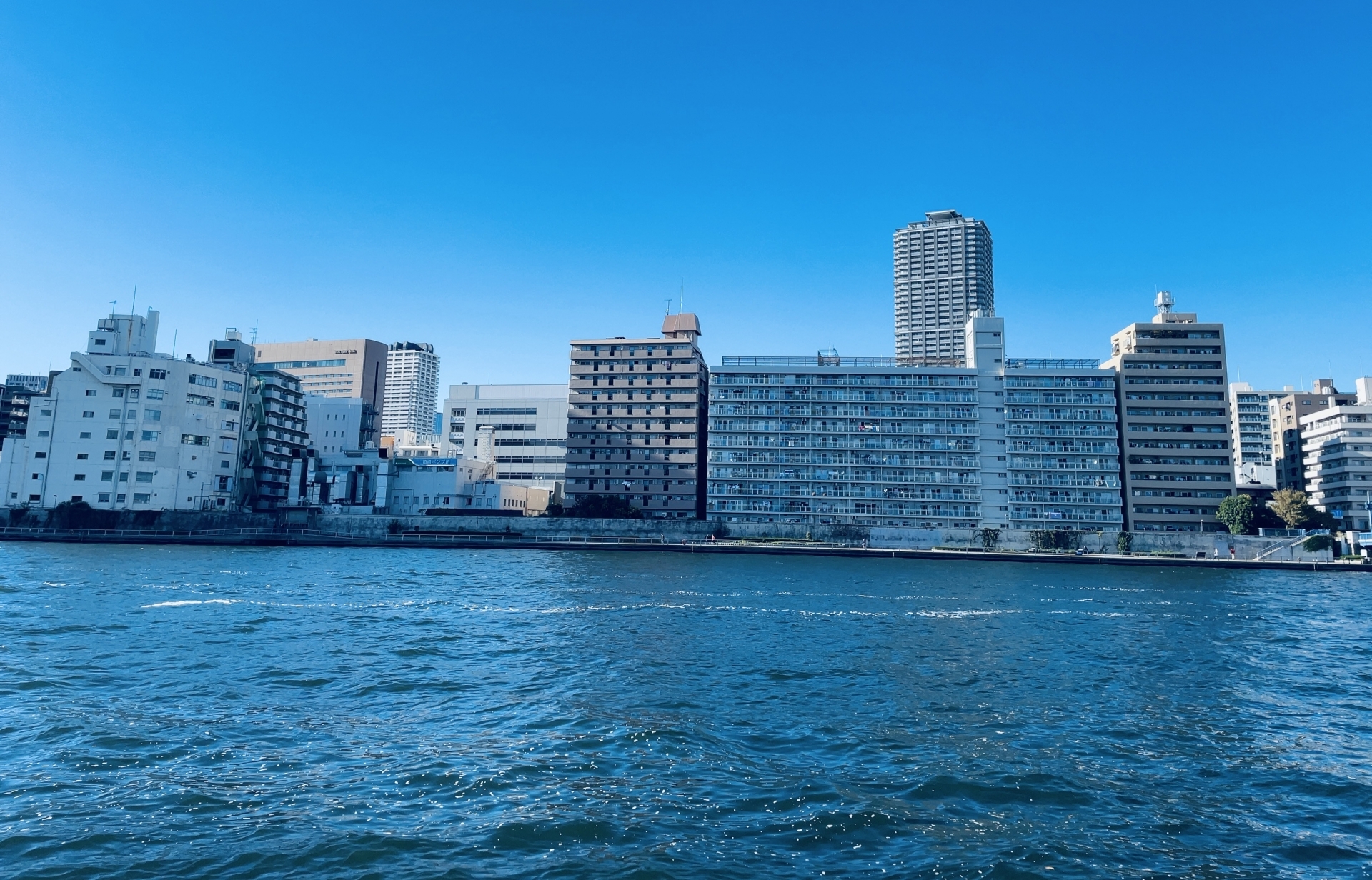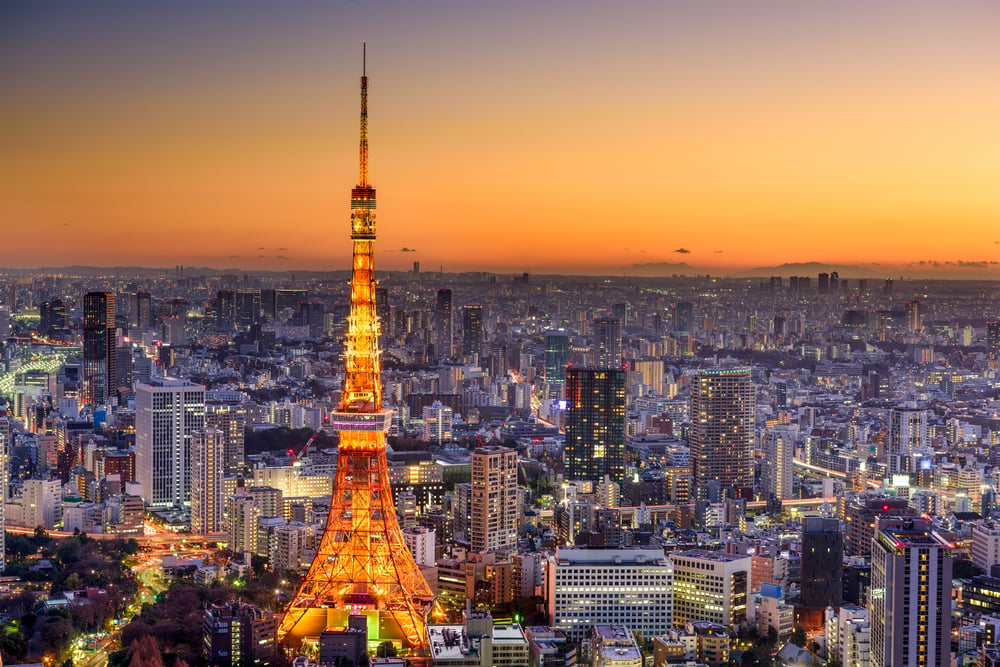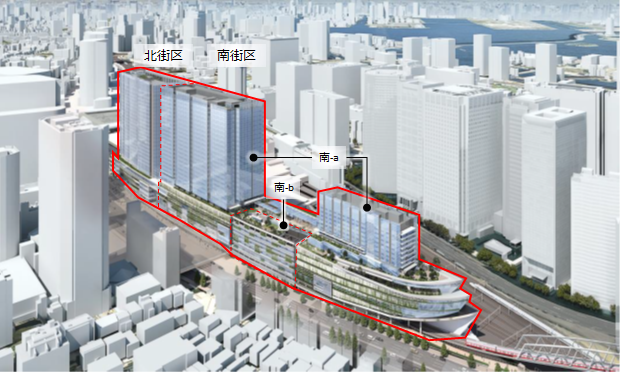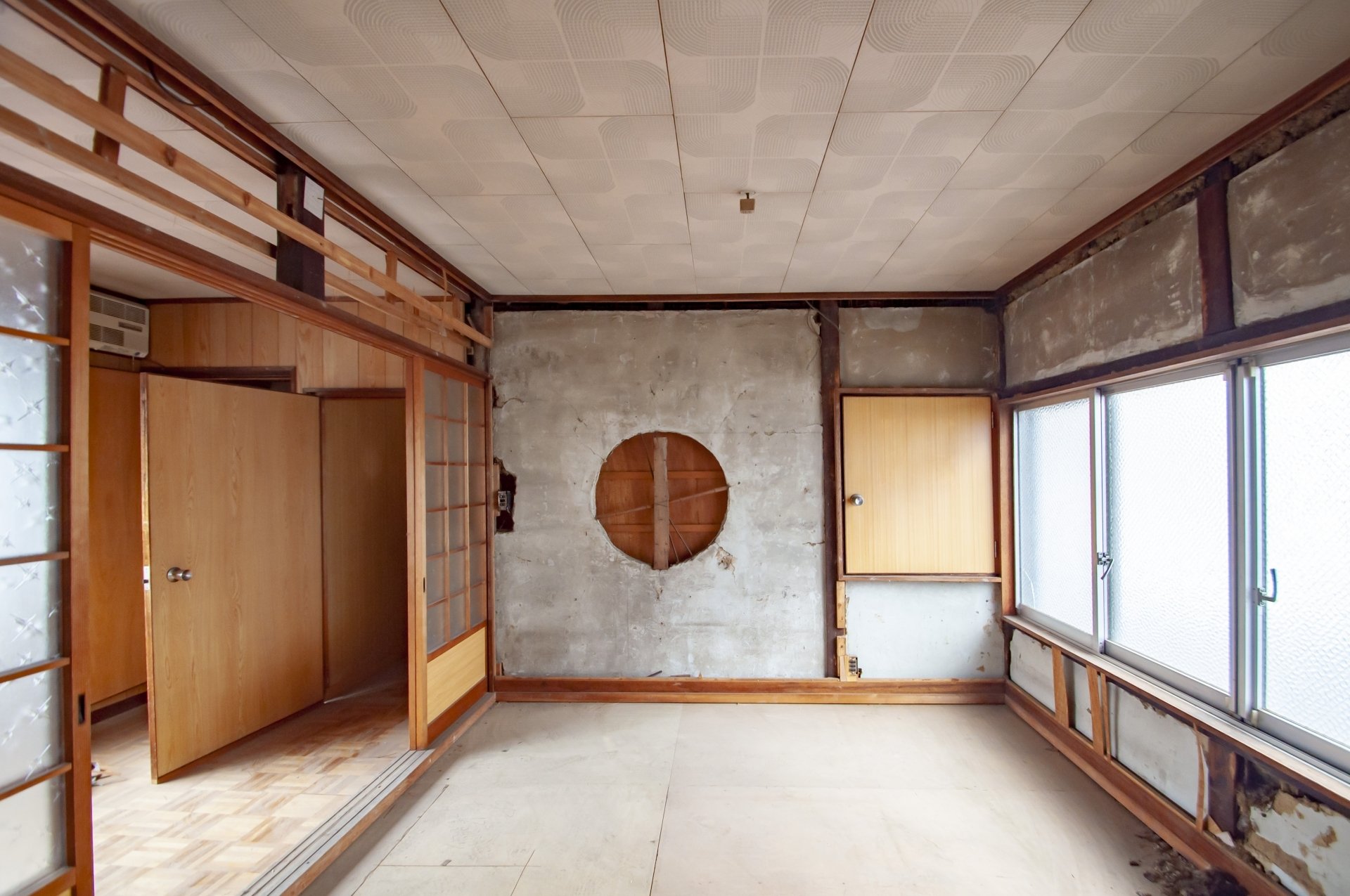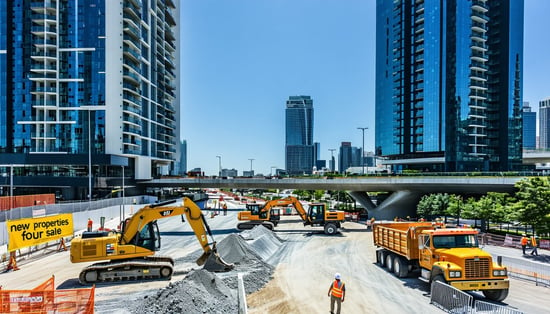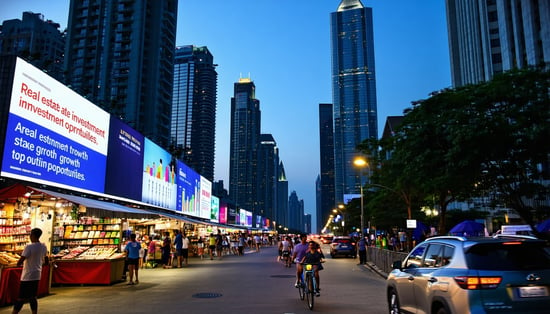As we enter 2025, the Tokyo real estate market continues to thrive. Property prices in Tokyo have maintained an upward trend since the onset of the COVID-19 pandemic, with particularly notable growth in demand for high-end residential properties in central Tokyo. From the latter half of 2024 to the beginning of 2025, prices for used condominiums surged sharply, driving up the average price across the entire market. The driving force behind this increase has been properties for the wealthy in central Tokyo, and the Tokyo real estate market is becoming increasingly polarized. This article focuses on the Tokyo real estate market in 2025, providing a comprehensive overview of the macroeconomic environment, changes in the wealthy market, trends in areas of interest, new trends, and real estate investment strategies for the wealthy. We will analyze this year's market trends from a business perspective and examine the keys to success.
1. Macroeconomic Environment Surrounding the Tokyo Real Estate Market in 2025
When discussing the Tokyo real estate market in 2025, it is essential to first understand the macroeconomic environment. The Japanese economy has been recovering from the COVID-19 pandemic and continues to grow at a moderate pace. However, inflation persists, with the consumer price index rising by approximately 4% year-on-year in January 2025. With wage increases failing to keep pace with inflation, leading to a decline in real income, inflation is also prompting the wealthy to reconsider their asset management strategies.
Interest rate trends are another major focus. After years of ultra-low interest rates, signs of change are emerging, with the Bank of Japan (BOJ) raising its policy interest rate in early 2025. This marks the end of the “negative interest rate” era, and deposit rates and mortgage rates at commercial banks are expected to rise. However, the Bank of Japan remains cautious, and interest rate hikes are expected to be gradual. While there is a possibility that borrowing costs for the wealthy may rise slightly, the direct impact is likely to be limited as many investors have a high equity ratio. However, for the real estate market as a whole, the purchase threshold for loan users is likely to rise, potentially affecting the pace of property sales and supply and demand dynamics.
On the other hand, the rise in inbound demand is also a key factor in discussing the Tokyo market. Following the relaxation of entry restrictions post-COVID-19 and the weakening of the yen, the number of foreign visitors to Japan has recovered sharply in 2024, with monthly figures exceeding 2019 levels. Hotel occupancy rates in Tokyo are rising, and overseas investors are actively developing and acquiring hotels. This trend is expected to continue into 2025, with the increase in inbound tourism likely to have a positive impact on the real estate market. Furthermore, capital inflows from overseas, not just from visitors to Japan, are also attracting attention. In particular, purchases of real estate in Tokyo by wealthy individuals from Asia have been increasing in recent years, driven by the perceived affordability of the yen and the stability of Japanese assets. Japan's high-end properties, known for their safety and political stability, are viewed as safe assets and “safe havens” in times of crisis. Reports indicate that wealthy individuals from mainland China and Hong Kong are actively acquiring penthouses in Tokyo. Tokyo's expected return on investment (approximately 3–4%) is higher than that of major overseas cities, which is another factor attracting investment capital.
Overall, the Tokyo real estate market in 2025 will face two macro trends: a transition from low interest rates and an expansion of inbound demand. Amid conflicting forces—the risk of market cooling due to rising interest rates and market revitalization driven by increased overseas demand—real estate in central Tokyo is expected to remain supported by solid demand. With its strong economic foundation and international attention, Tokyo will continue to be an attractive market for both domestic and international investors.
2. Characteristics and Changes in the High-Net-Worth Market
The high-net-worth market in Tokyo has undergone significant changes in recent years. First, the number of high-net-worth individuals in Japan is on the rise. According to a survey by Nomura Research Institute, the number of high-net-worth households with financial assets of 100 million yen or more reached a record high of approximately 1.65 million in 2023. This increase in the number of high-net-worth individuals is also affecting the real estate market, with an increase in transactions of high-priced properties. In fact, in the used condominium market in Tokyo, the percentage of properties priced at 100 million yen or more (commonly referred to as “100 million yen apartments”) has increased significantly from 2.6% in 2019 to 15.0% in 2025. This means that approximately one in ten properties on the used market is a billion-yen apartment, demonstrating the high demand for high-priced properties among the wealthy.
So, how are the preferences and lifestyles of the wealthy changing? First, there is a change in the values they seek in their homes. In the wake of the COVID-19 pandemic, the role of “home” is being reevaluated among the wealthy. With the increase in time spent at home and the establishment of telework, there is a growing tendency to place greater importance on qualitative aspects of housing, such as “spaciousness,” “comfort,” and “privacy.” In fact, since the pandemic, there has been increased demand for properties with home offices, soundproofing, and large terraces, driving up demand for luxury apartments in central Tokyo. For the wealthy, housing is no longer just an asset, but has taken on the meaning of a center of lifestyle.
Second, changes in investment preferences are also noteworthy. Prolonged ultra-low interest rates have driven the wealthy to shift their investments from deposits and bonds to real assets and riskier assets such as real estate and stocks. Among these, urban real estate is particularly popular as an investment target that offers both capital appreciation and stable income. This trend is not limited to domestic affluent individuals but also includes overseas affluent individuals actively purchasing high-end properties in Tokyo. In a yen-weakening environment, foreign affluent individuals are also increasingly investing in high-end urban properties due to the potential for exchange rate gains. This strong demand from both domestic and overseas affluent individuals has been a key factor driving up prices for high-end properties.
Additionally, from an asset preservation perspective, the trend toward multiple-location living is gaining momentum. In addition to luxury residences in the city center, more affluent individuals are acquiring second homes in suburban areas or overseas. Post-pandemic, interest has also grown in “suburban vacation homes to avoid crowds” and “villas in overseas resort destinations.” This trend is influenced by the increased freedom in choosing a place of residence due to the spread of remote work, as well as the desire to diversify bases in preparation for emergencies. However, Tokyo's convenience and status as an international city remain unmatched, and the trend is to prioritize the asset value of downtown properties as a main base while combining other locations according to lifestyle preferences.
In summary, the affluent market in 2025 will see an expansion and diversification of both the number of players and their needs. As the affluent population grows, the market for high-end properties will expand, and the quality demanded for housing will become more sophisticated. Looking at affluent real estate trends, while maintaining a focus on “urban core × luxury,” a cautious and strategic approach prioritizing a richer lifestyle and long-term asset value is evident.
3. Key Area-Specific Trends
Even within the 23 wards of Tokyo, the real estate market varies by area. In particular, areas popular among the affluent are seeing significant price increases and unique trends. Here, we will focus on the trends in the representative areas of Minato Ward, Shibuya Ward, and Chiyoda Ward, and explain the key points to watch.
Minato Ward Trends: Redevelopment Driving International Luxury Residential Areas
Minato Ward is one of Tokyo's most prestigious residential areas, known for its brand power and international appeal. In recent years, land prices in Minato Ward have risen significantly, with the average change rate for residential land in the 2025 land price survey reaching +12.7% year-on-year, a significant increase from the previous year (+7.2%). Over the past five years, land prices have risen by approximately 50%, one of the highest growth rates in the 23 wards of Tokyo.
Several factors contribute to this trend. First and foremost is the enhancement of regional value through large-scale redevelopment projects. In recent years, Minato Ward has seen the advancement of globally renowned redevelopment initiatives such as the “Takana Gateway City” plan, Mori Building's “Torano-mae and Azabudai Project,” and JR East Japan's “Shinagawa Development Project.” The opening of the new Takanawa Gateway Station and the construction of a cluster of skyscrapers have further improved transportation convenience and urban functionality, driving up real estate values across the entire area. In addition to increased demand for office space, the supply of luxury apartments in the surrounding area has also been growing, attracting strong interest from domestic and international investors.
Second, Minato Ward's own brand value is driving price increases. Minato Ward, home to upscale residential areas such as Akasaka, Azabu, and Roppongi, has established itself as a “representative affluent area of Tokyo.” As a result, many wealthy individuals from both Japan and abroad prefer Minato Ward as a real estate investment destination or place of residence, with particularly strong demand from overseas investors. Amid the yen's weakening trend, purchase demand from Hong Kong and Singapore is also increasing, contributing to the formation of an internationally diverse high-end residential market.
Third, there is a rise in demand for condominiums. Following the COVID-19 pandemic, there has been a growing trend toward returning to urban areas, and Minato Ward has become increasingly popular among families due to its convenience and comfort. The area offers excellent transportation access, a wide range of commercial facilities, and high-quality educational environments, all of which are essential for urban living. These factors are supporting demand for both new and existing condominiums. In fact, the average price of new condominiums continues to rise, and it is not uncommon for properties to sell out immediately upon release to affluent buyers.
Due to the above factors, the real estate market in Minato Ward is extremely robust. According to experts' luxury residential market forecasts, land prices in the central urban area centered on Minato Ward are expected to continue their steady upward trend. This is due to the combination of ongoing redevelopment, the inflow of foreign capital, and sustained demand for high-end apartments, which, coupled with a shortage of supply, is supporting prices. However, it is important to note that prices have risen sharply, making them increasingly out of reach for the average buyer. Those considering purchasing property in Minato Ward should carefully consider the timing and their financial plans.
Shibuya Ward Trends: High-end residential demand in a creative city
Shibuya Ward is an area that combines a youthful culture and a concentration of IT companies with high-end residential areas. Commercial and business functions have expanded significantly, and in recent years, redevelopment projects such as “Shibuya Scramble Square” have attracted attention. The rate of change in published land prices in Shibuya Ward also rose by approximately 12.5% year-on-year, continuing the upward trend in land prices in one of the five central wards of Tokyo. In particular, the area around Shibuya Station has seen a significant increase in commercial land prices due to redevelopment, with the emergence of high-end commercial facilities and high-rise offices enhancing the overall appeal of the area.
On the other hand, Shibuya Ward also features quiet, prestigious high-end residential areas such as Hiroo, Matsudo (Matsutō), Nanpeidōchō, and Yoyogi-Uehara. These areas feature large mansions and low-rise luxury apartments, offering a quiet living environment just a short distance from the bustling city center, which is popular among the affluent. A unique aspect of Shibuya Ward is the coexistence of the trendy vibe as a hub of youth culture and the tranquility of traditional upscale residential areas. As a result, relatively young affluent individuals who have succeeded in the IT and creative industries and prefer a “Shibuya-style” lifestyle are emerging as a key buyer demographic for luxury properties.
The real estate market in Shibuya Ward is expected to continue growing in a multifaceted way. While redevelopment is expanding office and commercial demand, stimulating investment, the area also has strong residential demand due to its good living environment. In particular, Shibuya Ward is easily accessible from the suburbs, making it an attractive option for families in their prime working years, which is helping to support demand. Inbound tourism is also popular in Shibuya, and there are increasing cases of wealthy foreigners purchasing properties in Shibuya as second homes or for investment purposes. Shibuya Ward offers the unique added value of being “the center of culture and business,” which will continue to be a driving force behind the luxury property market.
Trends in Chiyoda Ward: Rare, prime locations
Chiyoda Ward is the heart of Tokyo, home to the Imperial Palace, and is an area where commercial districts (Otemachi, Marunouchi, Yurakucho) and high-end residential areas (Bancho, Kojimachi Area, etc.) coexist. Land prices are extremely high overall, with the highest land price in Japan located within Chiyoda Ward (Marunouchi and Ginza [adjacent to Chuo Ward]). As a residential area, Chiyoda Ward stands out for its scarcity due to the limited number of properties available, but it compensates with unparalleled status and stability in asset value.
The Bancho area (Chiyoda Ward's Ichibancho to Rokubancho districts), a representative upscale residential neighborhood, is known for its historic mansions and is home to residences and luxury apartments owned by diplomats, corporate executives, and other affluent individuals. Apartments in this area have been priced in the hundreds of millions of yen since their initial sale, and due to the limited supply in the secondary market, they are consistently traded at high prices. Additionally, the area is close to Kasumigaseki, the administrative center of Tokyo, and is home to many public and political figures. Having an address in Chiyoda Ward is often considered a symbol of affluence.
The key feature of the real estate market in Chiyoda Ward is its stability. While other areas are prone to fluctuations due to economic conditions, properties in the prime locations of Chiyoda Ward are resistant to price declines and are considered suitable for long-term asset preservation. In fact, even amid concerns about population decline and the 2025 problem (an increase in real estate sales due to an aging population), prime locations in urban areas are noted for their high demand and resistance to price declines. Chiyoda Ward is precisely such an area where “select real estate” is concentrated. However, due to its extremely high scarcity, obtaining purchase opportunities is not easy, and the market also has low liquidity. Information on properties for sale often circulates through closed channels targeting the affluent, and many transactions are concluded before they even reach the general market.
Overall, Chiyoda Ward is a market favored by wealthy individuals with an ultra-stable mindset. It is an area that condenses the convenience and prestige of the city center to the extreme, and its value is not easily affected by economic conditions. However, due to limited new supply, market participation requires timing and information gathering capabilities. It is unlikely that the asset value of Chiyoda Ward will fluctuate significantly in the future, and it will remain an attractive area for wealthy individuals seeking steady returns through long-term holding.
4. New trends in the real estate market
In 2025, new trends that have not been seen before will emerge in the Tokyo real estate market. Keywords that will influence the affluent market include ESG investment, smart home technology, and luxury renovation properties. Let's take a look at how each of these trends will bring about change.
ESG investment and sustainability
In recent years, ESG (environmental, social, and governance) considerations have become a global trend in investment, and the real estate sector is no exception. In real estate development and management, efforts to improve energy efficiency, reduce environmental impact, and consider the local community are now being evaluated. In Tokyo's luxury real estate market, affluent investors are beginning to prioritize factors such as “Is this property sustainable?” and “Does it have environmental certifications (e.g., LEED or BELS)?” when selecting properties. In fact, a survey of domestic real estate owners revealed that approximately 50% of respondents cited “building health and comfort” as a key area of focus for ESG investments, with “climate change response,” “contribution to the local community,” and “disaster preparedness” also receiving approximately 30% support. This indicates that even in luxury residential properties, factors such as residents' health, safety, and environmental friendliness are now prioritized alongside traditional notions of luxury.
In response to this trend, real estate developers are increasingly incorporating ESG elements into their luxury properties. Specifically, this includes the use of high-insulation materials, renewable energy, and designs that promote greening and coexistence with local communities. In luxury condominiums targeting the affluent, “sustainable luxury condominiums” equipped with solar power generation systems, batteries, and environmentally friendly building materials such as wood are beginning to emerge. Additionally, designs that prioritize indoor air quality, natural lighting, and ventilation, with a focus on wellness (health promotion), are becoming more common. For the affluent, the concept of “living abundantly” is evolving to include not only personal well-being but also positive impacts on the environment and society, and the real estate market is evolving to meet this demand.
Smart Home Technology and Luxury Housing
The advancements in IoT (Internet of Things) and AI are bringing significant changes to the housing sector. In particular, “next-generation residences” equipped with the latest smart home technology are attracting attention in the luxury housing market. Smart homes are residences where home appliances and equipment are connected to a network, enabling centralized control and automation.
Specific examples include residences where lighting, air conditioning, curtains, and security systems can be operated with a single smartphone, and systems where AI learns residents' lifestyle patterns and automatically adjusts room temperature and lighting for comfort. In luxury residences, smart technology is also being used to manage home theaters, audio rooms, wine cellars, and other facilities, allowing residents to control wine cellar temperatures or view security camera footage in real time from outside the home. Additionally, properties with advanced features such as voice-activated control of all devices in the home or facial recognition to identify and greet visitors are beginning to emerge.
The smart home market in Japan is said to be slower to take off than in Europe and the US, but in recent years, the introduction of a common standard called “Matter” has begun, and the market is accelerating. Globally, the smart appliance market is expected to grow from approximately 3 trillion yen in 2018 to 11.5 trillion yen by 2025, and in Japan, this trend is gaining momentum, particularly in high-end residential properties. For the affluent, the adoption of smart home technology is not only seen as an enhancement of comfort and convenience but also as an added value that increases property value. Homes equipped with the latest technology are expected to maintain their competitiveness in the long term and tend to command higher prices in the resale market.
In the future, real estate developers and tech companies are likely to collaborate on the development of luxury apartments fully equipped with IoT devices. For example, security systems that allow residents to move from the entrance to their homes using facial recognition and contactless technology, as well as standard features such as EV charging stations and energy management systems, are becoming a reality, transforming what was once considered science fiction into everyday life. For the affluent, smart homes are no longer a luxury but a new essential technology that, once experienced, is hard to live without.
The rise of luxury renovation properties
Another trend gaining attention in Tokyo's real estate market is luxury renovation. Amid rising prices and supply shortages for new properties, renovated homes that have been purchased, refurbished with the latest equipment and design, and reborn as luxury properties are becoming an option for the affluent. In particular, in prime locations in the city center, there are still large apartments (over 100 square meters) and old mansions built before the bubble economy, and there is a growing trend to renovate them to meet modern luxury standards, giving them a charm that new construction cannot offer.
There are several reasons why high-end renovated properties are attractive to the affluent. First, they offer the advantage of securing rare locations and spaciousness. While newly developed apartments in urban areas are highly sought after and often require a lottery to secure, purchasing a used property allows one to find a property in desirable areas such as Bancho, Aoyama, or Hiroo with the desired floor area. By renovating it to one's preferences, one can achieve a “one-of-a-kind home” that satisfies both location and floor plan. Second, they can incorporate the latest designs and amenities. There are an increasing number of renovation companies specializing in high-end properties, and renovation plans featuring hotel-like interiors, the latest home automation systems, underfloor heating, and high-spec kitchens are popular. Even in older buildings, if the structural framework is sound, renovating the interior and plumbing can result in a quality that matches or even exceeds that of a new building.
Additionally, from an environmental perspective, renovations that utilize existing stock are gaining recognition as a “circular” approach that reduces waste. With the recent SDGs trend, there is growing interest among affluent individuals in renovations that prioritize utilizing existing resources rather than simply creating new ones. Homes that preserve the charm of traditional buildings while incorporating modern comfort can be considered a “premium choice” that also offers cultural value.
Of course, even as the high-end renovation market expands, there are important considerations. From purchasing a used property to construction, specialized knowledge is required, so collaboration with a reliable real estate company and contractor is essential. Additionally, some properties may have structural limitations that make renovations difficult. Therefore, even among the affluent, impulsive purchases should be avoided, and seeking professional advice to balance asset value and construction costs is key to success. With new construction prices likely to remain high for the foreseeable future, interest in relatively affordable high-end renovated properties is expected to continue. In Tokyo's real estate market, the “buy and grow” approach is also emerging as a viable option for the affluent.
5. Real Estate Investment Strategy for the Affluent in 2025
Based on the market trends discussed so far, let's consider the real estate strategy the affluent should adopt in 2025. We will organize key points for responding to market changes while leveraging the unique asset scale and perspective of the affluent.
- Asset diversification and long-term portfolio construction: Real estate is an important asset class for the affluent, but concentrated investment increases risk. Given uncertainties such as interest rate trends and demographic changes in 2025, it is important to construct a portfolio that combines Tokyo real estate with properties in other regions and other asset classes. While high-end properties in central Tokyo offer stability, allocating some funds to properties in growing cities like Osaka or Fukuoka, or to different sectors such as logistics facilities or offices, can help diversify risk and expand revenue opportunities. Additionally, real estate should be viewed as a long-term investment, and a mindset focused on capturing asset value over a 10- to 20-year horizon, rather than reacting to short-term price fluctuations, is key to success.
- Utilizing real estate funds and REITs: Even for high-net-worth individuals, purchasing large properties alone is not always the best option. In recent years, there has been a growing trend toward indirect real estate investment through private real estate funds and J-REITs (listed real estate investment trusts). For high-net-worth individuals, alternative investment options such as hotel development funds and overseas real estate funds are also available. By utilizing such funds, investors can enjoy the benefits of professional management without the hassle of managing properties themselves, and also diversify their investments across multiple properties. Additionally, some private REIT management companies are advancing their ESG initiatives, addressing the needs of affluent individuals seeking to balance social impact with investment returns. In the “Real Estate Investment Strategy 2025,” a hybrid strategy combining direct ownership and fund investments will also be effective.
- Integration with overseas assets and foreign exchange perspective: Many affluent individuals have assets spread globally, so it is necessary to consider domestic real estate strategies in balance with overseas assets. In a scenario of yen depreciation, the value of domestic real estate becomes relatively undervalued, presenting an opportunity to convert overseas assets into yen and purchase additional domestic properties. Conversely, in a yen appreciation trend, diversifying investments into overseas real estate can serve as a hedge against foreign exchange risk. While the yen exchange rate remains uncertain as of 2025, there is also a view that it may trend toward depreciation in the medium to long term. Therefore, strategically adjusting the mix of foreign currency-denominated assets and yen-denominated real estate is advisable. Additionally, it is important to constantly monitor overseas real estate market trends, regardless of whether the purpose is residential or investment, and to objectively evaluate the position of the Tokyo market. By understanding which cities the world's wealthy are focusing on, one can identify Tokyo's strengths and weaknesses. For example, by comparing Tokyo with other wealthy cities such as Singapore or Dubai, one can reaffirm Tokyo's appeal and reflect this in their asset allocation.
When implementing the above strategic points, it is important to seek the advice of reliable experts and gather the latest information. Real estate is illiquid, and a single decision can have a significant impact, so even wealthy individuals should not act on their own. Working with experienced real estate consultants and financial advisors to accurately gauge market trends is the key to success.
6. Conclusion
The Tokyo real estate market in 2025 will remain attractive to the wealthy, but it will also be in a period of transformation. While the macroeconomic environment will see new challenges such as inflation and rising interest rates, demand for real estate in central Tokyo will be driven by strong domestic and international demand. The high-end market is showing unprecedented activity due to an increase in the wealthy population and changes in preferences, with land prices in major areas such as Minato Ward leading the market. Trends such as ESG, smart homes, and renovations cannot be ignored, and success in investment requires a wide range of knowledge.
Under these circumstances, the key to successful real estate investment and management for the wealthy is to be “cautious and strategic.” It is important to remain calm and assess asset value and risk from a long-term perspective, without being swayed by bubble-like enthusiasm. Now, when real estate prices are skyrocketing, it is essential to take a comprehensive approach that considers not only price but also quality of life and future value. Fortunately, Tokyo's luxury real estate has strong fundamentals, and acquiring the right property at the right time can deliver high satisfaction and returns.
Finally, for the affluent, real estate is not merely an investment asset but also a stage that enriches their lives. By leveraging the dynamism and stability of Tokyo as a city and crafting a real estate strategy aligned with one's lifestyle and values, it is possible to achieve significant success in the Tokyo real estate market by 2025. By accurately interpreting future market trends and acting logically yet flexibly, this transformative period can be transformed into a true opportunity.
Daisuke Inazawa
Representative Director of INA&Associates Inc. Based in Osaka, Tokyo, and Kanagawa, he is engaged in real estate sales, leasing, and management. He provides services based on his extensive experience in the real estate industry. Based on the philosophy that “human resources are a company's most important asset,” he places great importance on human resource development. He continues to take on the challenge of creating sustainable corporate value.

.png)

